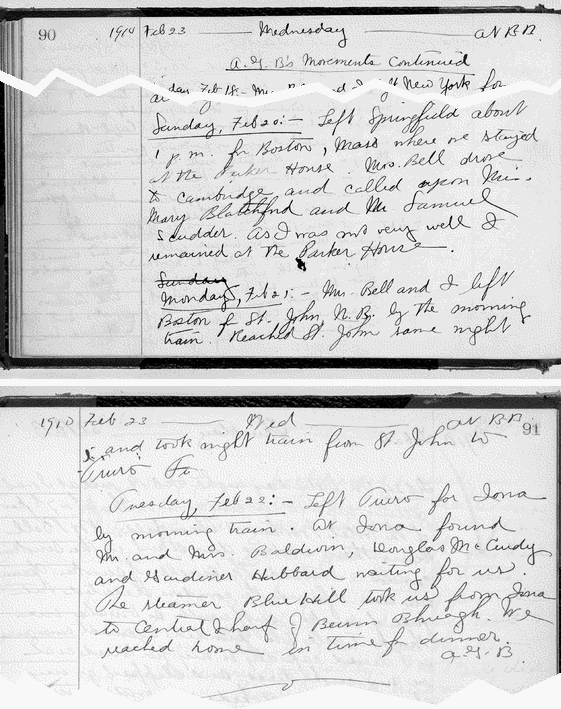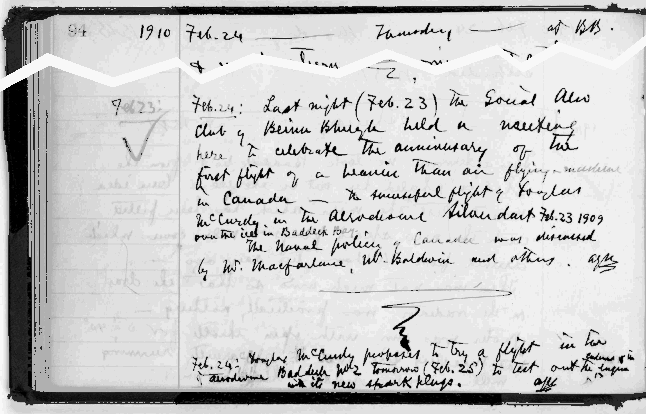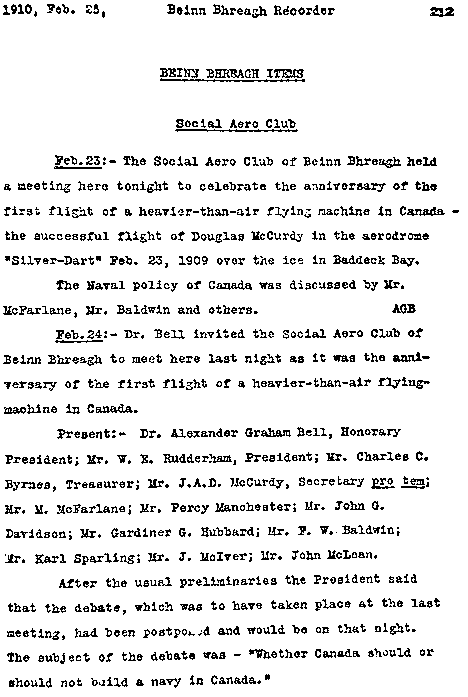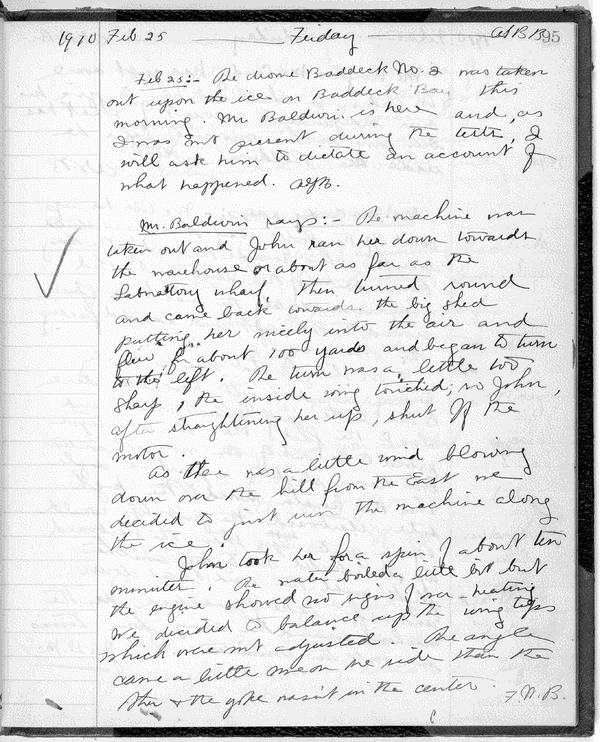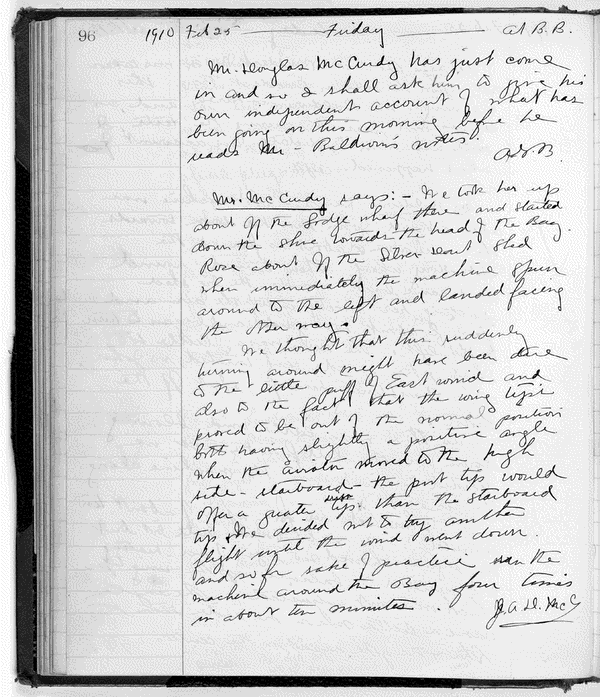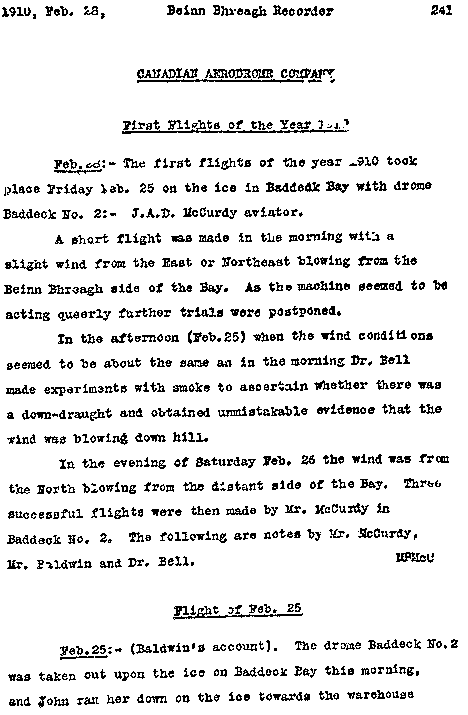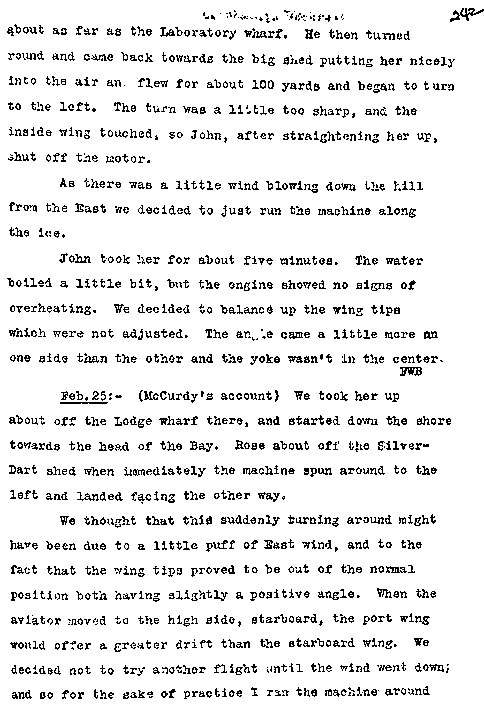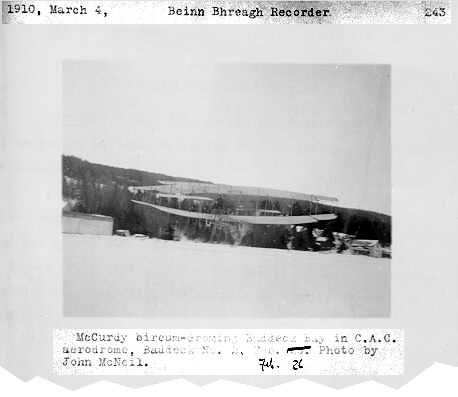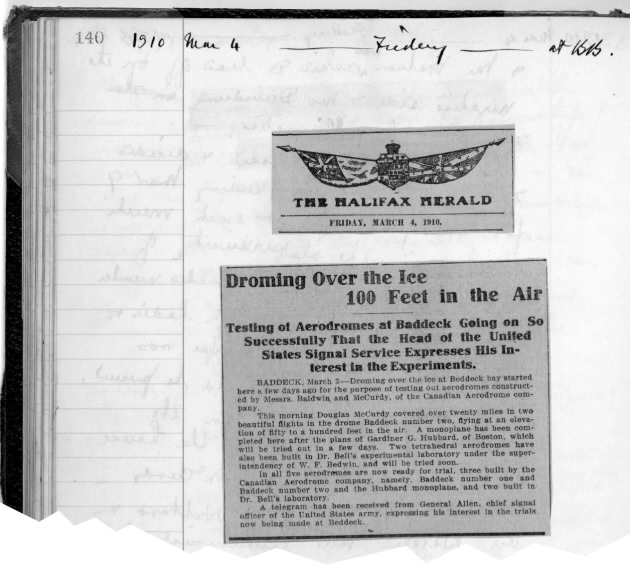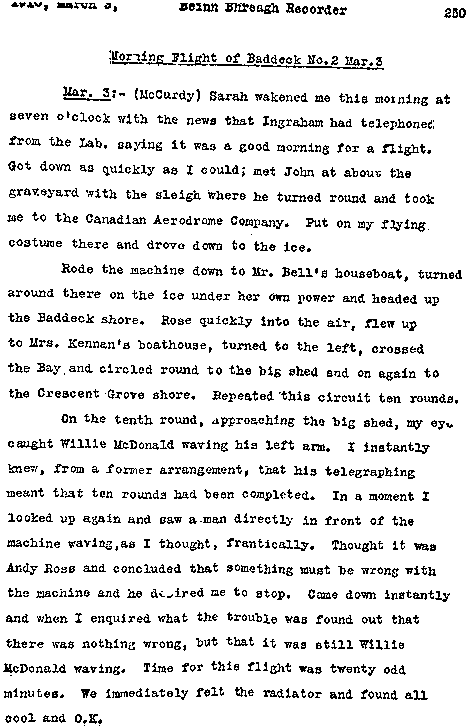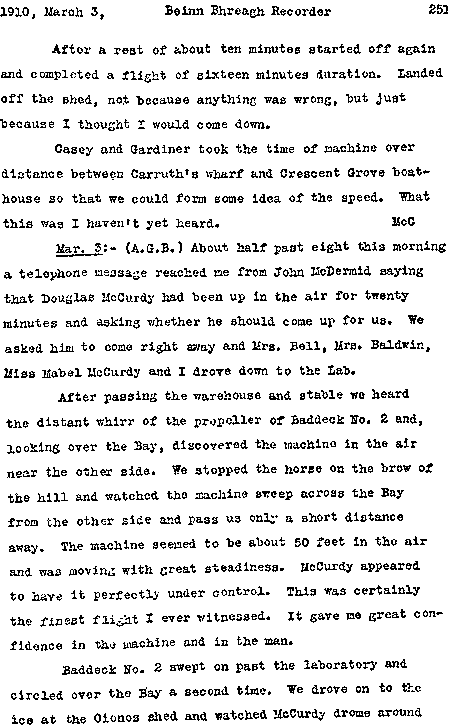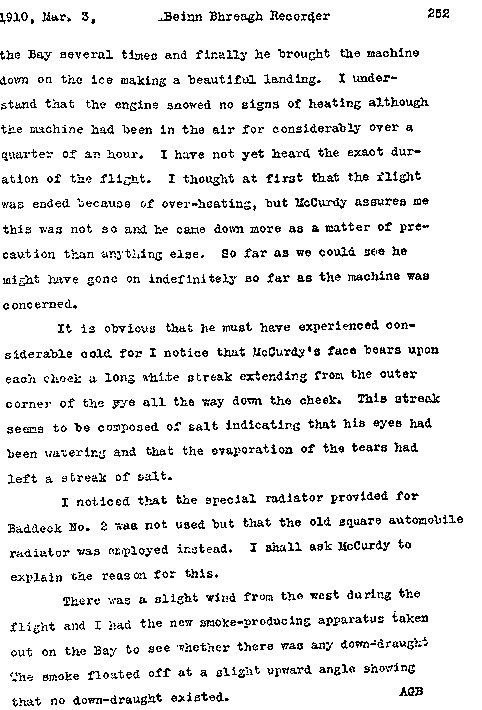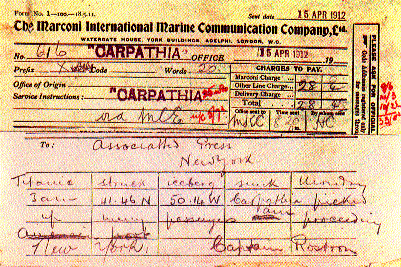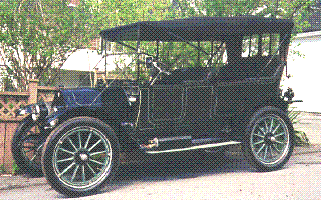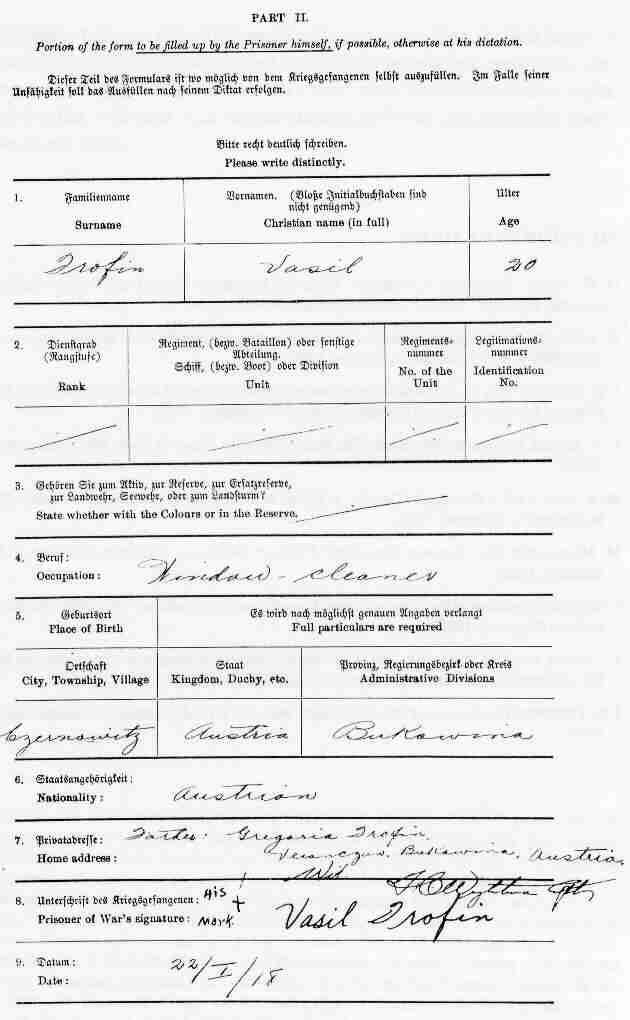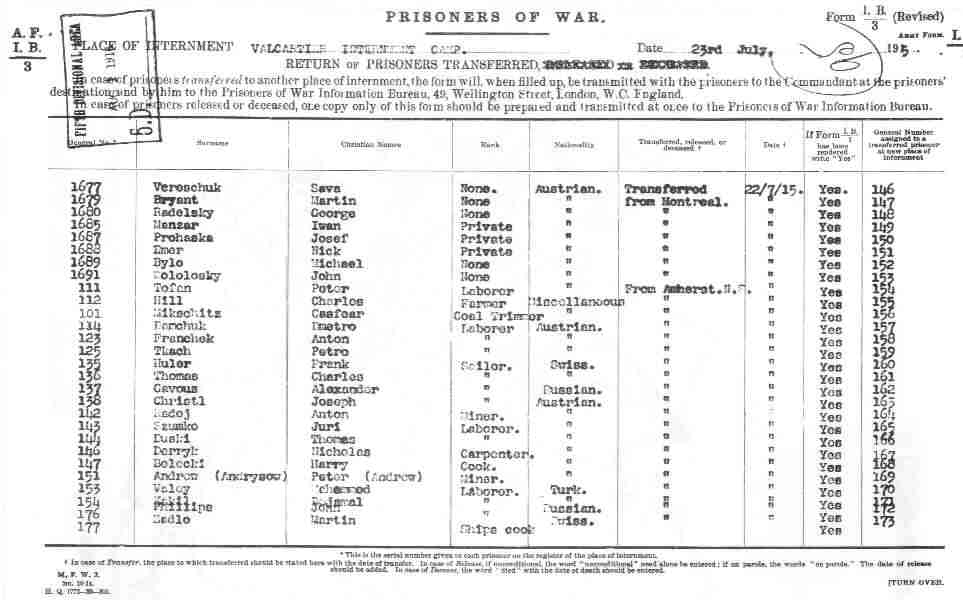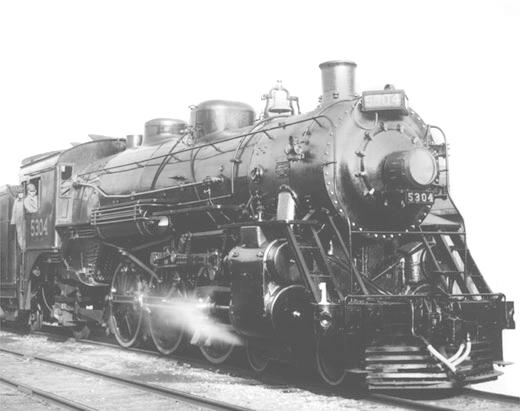A comment about Dr. A.G. Bell's records
(by I.C.S., 4 August 2001)
|
Dr. Bell continually insisted on everyone keeping written records of any and all experimental work done each day. He spent a lot of his own time writing notes in his journal, and often he would nag others to be sure to write down notes describing what they had done and seen — within hours, while memories were fresh. This was a continual concern ("fanatical" and "obsessed" are a little too strong maybe, but not by much) of Dr. Bell.
The Beinn Bhreagh Recorder is a prominent example of Bell's emphasis on the importance of keeping written records.
He kept checking that these records were being made, and when he was dissatisfied he would sometimes expand the record himself by the device of a sort of cross-examination in which Bell asked questions and others would give answers, with the whole being written down as it occurred. Of course Bell's position, reputation and status were such that, when he took the time to ask a series of questions, everyone else took the time to give him the answers he wanted.
An example of this cross-examination style of eliciting information is found on pages 97-101 of Dr. Bell's journal, dated Feb. 25, 1910, and written by Bell at Beinn Bhreagh, Nova Scotia. Bell wrote: "I don't quite get from the remarks of either Baldwin or McCurdy a picture of what occurred" so he proceeded to get the additional details that he wanted. Page 97 is reproduced below. This is a permanent record of a dialogue betweeen "A.G.B." (Dr. Bell) and "McC." (J.A.D. McCurdy):
1910 Feb. 25 Friday at B.B.
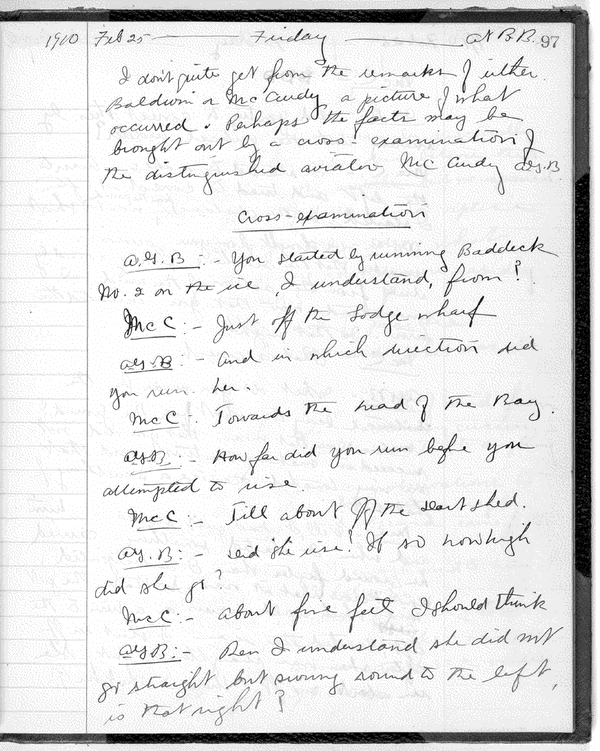
Source: The A.G. Bell Family papers at the U.S. Library of Congress
Historical Collections for the U.S. National Digital Library
Low resolution (faster downloading):
Page 97:
http://memory.loc.gov/mss/magbell/338/33800101/0096.gif
Page 98:
http://memory.loc.gov/mss/magbell/338/33800101/0097.gif
Page 99:
http://memory.loc.gov/mss/magbell/338/33800101/0098.gif
Page 100:
http://memory.loc.gov/mss/magbell/338/33800101/0099.gif
Page 101:
http://memory.loc.gov/mss/magbell/338/33800101/0100.gif
High resolution (better legibility):
Page 97:
http://memory.loc.gov/mss/magbell/338/33800101/0096.jpg
Page 98:
http://memory.loc.gov/mss/magbell/338/33800101/0097.jpg
Page 99:
http://memory.loc.gov/mss/magbell/338/33800101/0098.jpg
Page 100:
http://memory.loc.gov/mss/magbell/338/33800101/0099.jpg
Page 101:
http://memory.loc.gov/mss/magbell/338/33800101/0100.jpg
This concern, that detailed written records be made and kept, has left an extensive legacy of historical material that is hugely valuable to us today; it enables us to follow day by day and often hour by hour the actions and thoughts of the key participants in Bell's work. We know what was being done, by who and when, and what happened, all with the incomparable dependability of a record written at the time by the people on the scene.
One might ask why Dr. Bell put so much effort into written records. A clipping from the Texas Dallas Morning News, May 21, 1939, tells of a remarkable event in 1878, when Bell's future telephone empire tottered on the brink of extinction in a lawsuit against the Western Union Telegraph Company. At the last minute, Bell's patents (and fortune) were saved by the lucky preservation and discovery of a crumpled and discarded sheet of paper with crucial notes. There is little doubt that this experience had a lot to do with Bell's later insistence on everyone keeping detailed notes.
Clipping from the Dallas Morning News, May 21st, 1939
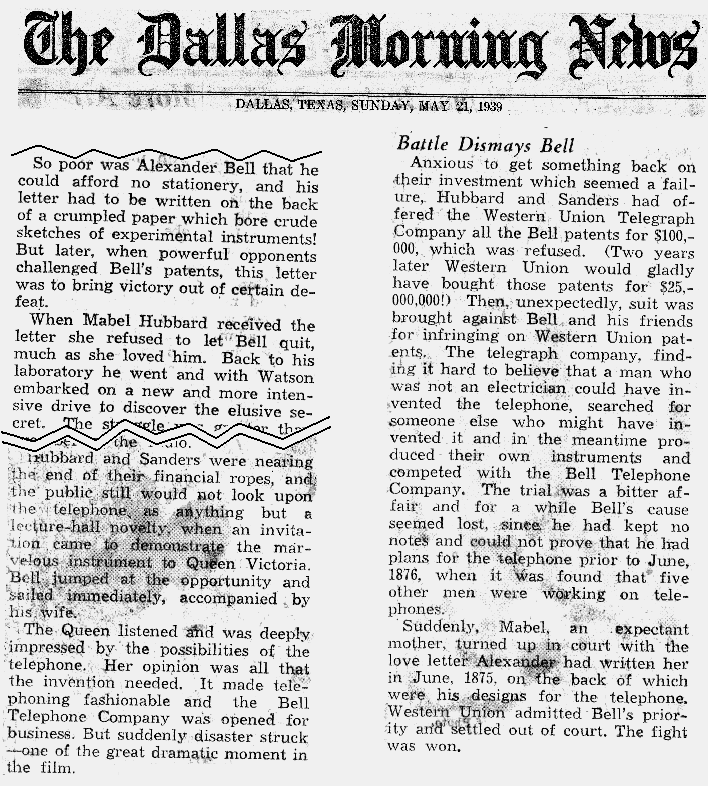
Source: The A.G. Bell Family papers at the U.S. Library of Congress
Historical Collections for the U.S. National Digital Library
Low resolution:
http://lcweb2.loc.gov/mss/magbell/999/99900101/0009i.gif
High resolution:
http://lcweb2.loc.gov/mss/magbell/999/99900101/0009i.jpg
This Dallas Morning News article is a lightly-edited version of promotional material distributed by the Twentieth-Century Fox movie studio, at the time of the release of the movie "The Story of Alexander Graham Bell" produced by Darryl Zanuck and starring Don Ameche as A.G. Bell, Henry Fonda as his assistant Thomas Watson, and Charles Coburn as his father-in-law Gardiner Hubbard. It is well known that the Hollywood movie companies take great liberties when dealing with historical events, and often hugely distort and even fabricate large chunks of history. Nobody accepts a Hollywood film as being a reliable source of accurate history. However, this story about the fortunate discovery of a vital document at the last minute appears to be true. It certainly is true that there was a no-holds-barred legal battle between Bell and Western Union.
In the late 1870s, Western Union held a virtual monopoly of long distance communications in the United States. Western Union refused to buy Bell's telephony patents because it believed that one of its own employees held a patent for the telephone. Bell won the patent infringement lawsuit in 1879, giving him complete control of the telephone industry. Western Union was forced to sell its telephone network to Bell, as well as its Western Electric manufacturing concern in 1881.
Source:
Brief history of the International Telegraph Union
http://www.cs.berkeley.edu/~gribble/cs39c/Comm/regulation/regulation.html
On March 7, 1876, three days after the basic telephone patent had been issued, Bell had developed a working telephone. In the fall of 1876, Bell and his financial backers, Thomas Sanders and Gardier Greene Hubbard, a successful leather merchant and a prominent attorney, offered to sell their invention and patent to Western Union Telegraph Company for $100,000, but the offer was refused. On March 20, 1879, both the New England Telephone Company and the Bell Telephone Company were consolidated under the name National Bell Telephone Company. Western Union purchased the Gray, Edison and Dolbear patents and organized its own telephone company, the American Speaking Telephone Company.
To counter this attack, the Bell Company leaders did two things. First, they hired a professional manager, Theodore N. Vail, to manage their organization. Second, they filed a lawsuit against Western Union for infringement of Bell's patents. On September 12, 1878, the Bell Company filed a suit in the Circuit Court of the United States, District of Massachusetts, against the giant Western Union Telegraph Company — technically against Peter A. Dowd, agent for the Western Union's telephone subsidiary — for infringement of the Bell patents. Western Union engaged George Clifford, a prominent patent attorney, as its chief counsel in the case.
Western Union was forced into settlement. The settlement provided that Western Union withdraw from telephone service and sell its network and patents to the Bell Company. In return, Bell agreed to stay out of the telegraph business and to pay Western Union 20 percent of its telephone rental receipts over the 17-year life of their patents. This agreement added 56,000 telephones in 55 cities to the Bell Company. In 1909 AT&T bought 300,000 Western Union shares, enough to give it working control. In 1910 Vail became president of Western Union, making him president of both companies.
Source:
Telecommunications History
http://www.geocities.com/ResearchTriangle/7360/section2.htm
|
|
